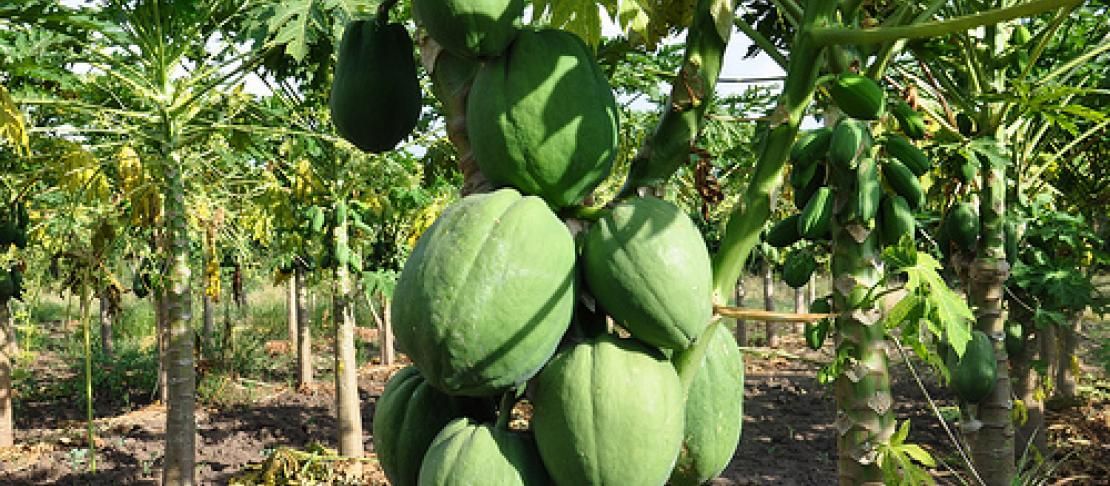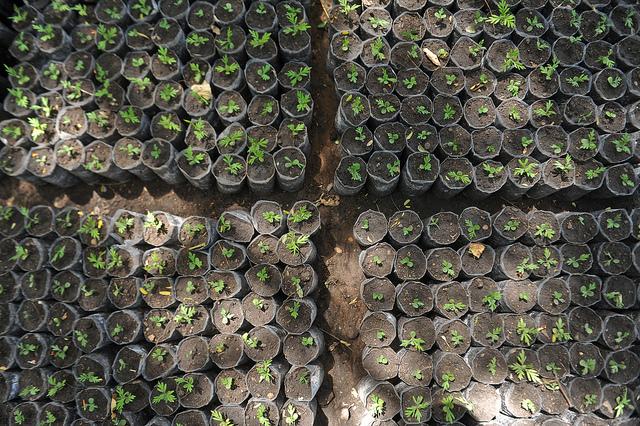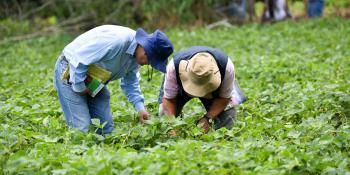"Farmers should use trees to cushion their farms from degradation"

Our East Africa team is collaborating with a number of partners and research organizations to promote agroforestry in Lushoto and Nyando Climate-Smart Villages. These efforts are now paying off.
In the Lushoto District in Northeastern Tanzania, more than 60 percent of the land is eroded. Therefore farmers in the area have begun testing a portfolio of promising climate change adaptation, mitigation and risk management interventions to help turn this around. This is being done together with research and development partners, and government extension agents.
Agroforestry and land management are among the mitigation interventions used in Lushoto.
Agroforestry has both ecological and economic benefits. It can provide farming families with the ‘five Fs’: Food, Fuel, Fodder, Finance and Fertility. In a nutshell, by integrating trees in farms and rangelands, farmers reduce their dependency on a single staple crop thereby diversifying their livelihoods.
Champion farmers take the lead on trees
Sadick Selemani in Lushoto is a champion farmer with trees like Albizzia and Grevillea species along the boundary and across contours on his 1.5 acre farm.
“I recently harvested 10 trees for timber which I used for roofing my house. Additionally, I sold five trees for 125,000 Tanzania Shillings (US$ 80) and used the money to pay school fees for my children” he said.
Another champion farmer, William Dennis has Grevillea, Casuarina and Pinus tree species on his three acre farm.
“Climate variability will hasten degradation of soil and water resources. Therefore our local community members should use trees to cushion their farms from degradation and benefit from the income generated,” says William.
In addition to individual farmers, schools have participated in tree planting. Yamba and Kongei Primary Schools planted Casuarina species around the school to act as a windbreaker.
There is a surging demand for tree seedling which are in short supply, and Tanzania Forestry Research Institute (TAFORI) is spearheading farmer training to establish three tree nurseries; each under the management of three newly established umbrella community based organizations, with a combined capacity of producing 45,000 tree seedlings in a season.

A Tree nursery. Photo: K. Trautmann
View more photos from tree nursery activities in Lower Nyando, Kenya.
The main partners for this work: include the CGIAR Research Programme on Climate Change, Agriculture and Food Security (CCAFS), Tanzania Forestry Research Institute (TAFORI), Selian Agricultural Research Institute (SARI), Sokoine University of Agriculture (SUA), World Agroforestry Centre (ICRAF), and Lushoto District Council.
Each partner contributes their expertise to specific interventions, integrating these within existing community institutions and organisations.
The partnership has revived private tree nurseries that were dormant, making them able to supply 17,000 tree seedlings in the 2012 long rain season and 15,000 tree seedlings in the 2013 long rain season. At least 250 male and 150 female headed households have each planted 60 tree seedlings in the past two years. The tree planting also responds to a policy by the Lushoto District Council requiring a 10 percent tree cover on all farms.
Agroforestry in Nyando, Kenya:
Soil erosion is rampant in two annual rainy seasons in Nyando, and run off forms deep gullies that affect about 40 percent of the landscape which has negatively affected agriculture and food security.
To tackle these problems, people in Nyando have organized themselves into self-help groups covering 1,200 households. The majority of the active members are women.
The community-based organisations have partnered with CCAFS, World Agroforestry Center (ICRAF), CARE International, World Neighbors, VI-Agroforestry, Kenya Agricultural Research Institute (KARI), Ministry of Agriculture, Livestock and Fisheries (MALF), and Ministry of Environment, and Natural Resources (MENR) to increase tree cover on farm.
The partnership has supported 25 tree nurseries, with a capability of producing 80,000 high quality tree seedlings in a season. The number of tree nurseries as well as their capacity has increased five times compared to five years ago. With a survival rate of 75 percent, the on-farm tree population has increased by at least 150,000 trees within five years.
Learn more: Empowering a local community to address climate risks and food insecurity in Lower Nyando, Kenya
Related journal article: Are food insecure smallholder households making changes in their farming practices? Evidence from East Africa
Access baseline surveys for the CCAFS Learning sites: Baseline Household Surveys 2010-2011
John Recha is a Participatory Action Research specialist, Philip Kimeli is a Research Assistant and Vivian Atakos is a Communication Specialist. All members of the CCAFS East Africa team. Follow East Africa on Twitter: @Cgiarclimate_ea



